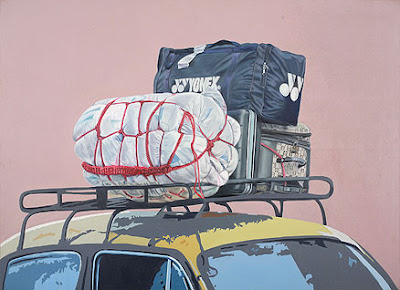



All eyes are now on the Saffronart autumn online auction of Contemporary Indian art, which will take place online from September 3 - 4. This auction features 130 works by 62 artists of modern and contemporary Indian art. Previews will be held in New York and Mumbai prior to the online auction. Next in line is Sothebys Modern and Contemporary Indian art auction, which will be held on Sep 18 in New York. The sale features 127 lots by senior and upcoming artists from the country. Jamini Roy, FN Souza, Ganesh Pyne, Atul Dodiya, Baiju Parthan, Jitish Kallat, Hema Upadhaya are some of the artists whose works will be auctioned at the sale. Collectors and investors will find it interesting to see the results from these two auctions as they will further indicate the growth rate of the Indian art market.

(Published in Financial Times. ET online - title for the story erroneously reads Contemporary art edging towards stagnation instead of stabilization)


In fact, one now hears of collectors who like to invest only in prints and are actively on the lookout for upcoming artists who are proficient in printmaking.
There are a few artists who specialise in printmaking and their works are extremely sought after. Artists such as Krishna Reddy (one of the finest printmakers in the country), Laxma Goud, Zarina Hashmi and Atin Basak are a few names that are known for their fine quality prints.
The initial resistance to prints was mainly due to the fact that printmaking involves multiple copies. However, gradually the perception has changed and people are realising that this too is an original art form. The change has occurred over the years as the awareness about printmaking techniques has permeated the buyer’s consciousness.
An edition size could be as low as five or as high as fifteen, but ideally a lower edition size is preferred.

When buying a print, one should ensure it is a print and not a poster. In case of an intaglio, look for the plate mark which is an indentation along the edges which appears due to the pressure with which the paper is pressed upon in transferring the design. Limited edition prints are signed and numbered (S/N) by the artist. The lower the number of prints the better its investment value, however the higher the number of prints the more affordable it is.
(Published in Financial Times)